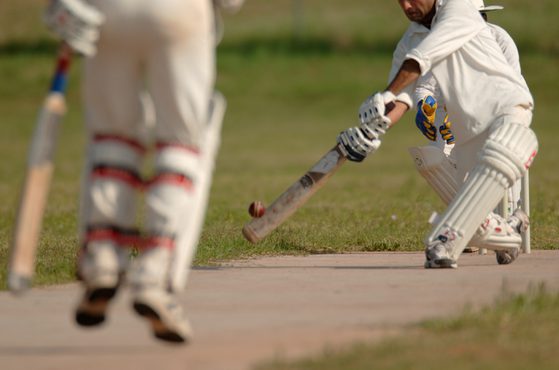The Hundred. Baller League. Influencer boxing. These are just a handful of recent ‘breakaway’ or ‘challenger’ alternatives to more ‘traditional’ sports models that are taking the world by storm. Whether you like it or not, such models are undeniably redefining how we consume sport as fans, opening the doors to new audiences and providing more career options and rewards for athletes.
Take for example the world of football, where the media rights landscape is shifting dramatically. Former Newcastle United co-owner Amanda Staveley has claimed that sport must keep pace or risk losing fans. She recently outlined in an interview with Bloomberg that a new direct-to-consumer model must be developed to adapt to how young people are consuming sport — something that’s driving many of the breakaways we’re seeing today.
Here, Will Hardwick takes a close look at the prevalence of such breakaways and how they’re impacting the world of sport, from golf to athletics and beyond.
Breakaways & the cycle of innovation
Breakaway leagues are nothing new. In 2021, the idea of a European Super League once again caused outrage as Florentino Perez spearheaded an attempt to rip up the traditional structures of European football and lay down a gauntlet to UEFA.
Yet even beloved institutions like the Premier League started life as a controversial breakaway from the English Football League in an effort to maximise revenue generation for the clubs sitting at the top-tier of English football.
So, while such ventures can be unpopular among certain sections of a fanbase, they’re part of the natural cycle of innovation and progress that can breathe new life into the sports we love. Plus, as new ventures, they’re able to play around with formats, rulesets and technologies more so than their established counterparts.
What makes a successful breakaway?
Many successful breakaways don’t even seek to challenge the prevailing, ‘mainstream’ essence of a sport but rather look to create a new path of their own.
One example of this is the crossover between sports and entertainment due to the growing influence of social media personalities in sport. In sports like boxing, this model seems to be working well — with ‘influencer boxing’ events drawing huge online audiences and introducing boxing to younger and more diverse demographics who may not have previously followed the sport. Such popularity is likely to generate additional media coverage across the entire sport, despite some consenting voices who remain critical of its impact on the ‘integrity’ of the sweet science.
Other new formats and leagues are often attempts to achieve greater autonomy from governing bodies. The Hundred is a prime example of this, with the current proposed agreement looking set to cede much power to the new investors despite the fact some cases only have minority shares in their franchises. With tens of millions of pounds being injected, investors want autonomy over the commercial arrangements of the competition and its future direction.
The rise of influencer & crossover boxing
Social media stars such as Jake Paul and KSI have brought a great deal of attention to boxing by promoting and participating in ‘crossover’ fights that involve celebrities, former professional sports stars and influencers. Misfits Boxing and Most Valuable Promotions have now thrust the pair into competition with more established promoters like Eddie Hearn, Oscar De La Hoya, Frank Warren and Ben Shalom.
Incredibly, in his first six professional ‘crossover’ fights, Jake Paul generated 2.75m pay-per-view (PPV) buys worth approximately $150m, with his fight against Tommy Fury generating 800k PPV buys alone in 2023. Meanwhile, KSI’s two fights with Logan Paul were rumoured to generate 3.3m PPV buys and his own fight with Tommy Fury received 1.3m PPV buys in 2023, making it the biggest fight in terms of PPV buys that year — superseding huge world-title fights in the traditional boxing scene.
‘Crossover’ boxing isn’t the only challenge to face the established mechanisms in boxing. Endeavour — the owners of the UFC and WWE through its subsidiary TKO Group — is currently seeking to establish its own boxing league in conjunction with Saudi Arabia’s Public Investment Fund (PIF) to challenge the current bodies of the four recognised world title belts (WBC, WBA, IBF and WBO) and streamline the sport to define one world champion. This may also prove to be an interesting obstacle to navigate for more established promoters such as Matchroom, Top Rank, Queensberry, Boxxer and Golden Boy Promotions.
Football’s digital transformation
Built on its original success in Germany, Baller League has arrived in the UK. Broadcast on Sky Sports, it involves a mix of former pros, released academy players, free agents and influencers who compete in six-a-side games on smaller indoor pitches.
Former Liverpool player and AFC Bournemouth record signing Jordon Ibe — now playing for the 26ers in the Baller League — stated that "People might not be into sports period, but they might come to this because they'll think a 90-minute game is a bit too long”.
Baller League also follows in the success of indoor seven-a-side tournament Kings League set up by former footballer Gerard Pique in Spain and South America. Its sister competition — Queens League — claims to have the most viral goal in the history of women’s football, with Antonela Romoleroux’s goal for P10 FC being viewed over 300m times. The Women’s Sport Trust highlighted that the Queen’s League dominated digital engagement among women’s only leagues with 7.2m engagements — treble that of its closest competitor.
Such challenger leagues are focused on attracting younger, more digital-focused audiences in-line with the thinking that Amanda Staveley has advocated for the Premier League to follow.
Golf sees new investment
Golf is yet another sport that’s looking to expand its reach in the form of the TGL. The technology-inspired league is designed to facilitate fast-paced play and spotlight player personalities and profiles. It has successfully achieved viral moments in its first season, such as Tiger Woods hitting a wedge shot when a mid-iron was the appropriate selection.
TGL’s television ratings have exceeded those of the most recent challenger to the established Golf order — LIV Golf — set up by the PIF. LIV sees players competing in 54-hole golf tournaments with no cut — guaranteeing earnings regardless of where they finish and simultaneously integrating team play with individual play. This guaranteed money — often in astronomical sums — saw a swathe of players leave the established PGA and European Tours to join LIV. This has forced the PGA tour to react by pouring money into new Signature Events with $20-25m purses as well as its Player Impact Program, which is a reward for those golfers generating the most positive media interest and exposure.
Athletics follows suit
Four-time Olympic Champion Michael Johnson is heading up Grand Slam Track — a brand new big-money league designed to make ‘fantasy’ matchups between the biggest stars from the around the world in regular track events.
The events are divided into six categories: Short Sprints (100m and 200m), Short Hurdles (100/110m Hurdles + 100m flat), Long Sprints (200m and 400m), Long Hurdles (400m hurdles and 400m flat), Short Distance (800m and 1,500m) and Long Distance (3,000m and 5,000m). The Slam Winner is decided over cumulative points over both events and wins $100k.
The criticism often levelled at athletics is that — aside from the Diamond League — athletes are able to pick and choose where they wish to race before inevitably coming together at the Olympics or other major championships. The Grand Slam Track therefore offers a chance for the sport to create a league capable of keeping eyes on the sport in the intervening years.
Legal challenges facing breakaway & challenger sports
Through media rights, betting, eCommerce, data, technology and live events, revenue streams in sport are endless and continuing to rise. The industry is becoming increasingly lucrative for private equity, institutional investors and sovereign wealth funds looking to drive the direction of certain sports.
Moreover, sport is increasingly becoming intertwined with entertainment — and in today’s digital age, sports and leagues are forced to innovate to keep pace with trends. Yet a balance must be struck to avoid alienating fanbases to disastrous consequences, as those involved in the European Super League soon found out.
As with any new venture, a raft of legal challenges await new breakaway leagues and promotions. From disputes that may arise between owners and players belonging to the existing leagues to drafting corporate governance documents, finding and providing financing, creating new rules and regulations, aligning with governing bodies and ranking systems and competition law issues, sports innovators need an experienced legal partner by their side to help navigate the various complexities.
That’s where we come in. Our specialist and multi-award-winning sports law team is recognised nationally and internationally as one of the largest and most experienced multidisciplinary legal teams in the industry.
Talk to us by giving us a call on 0333 004 4488, sending us an email at hello@brabners.com or completing our contact form below.




